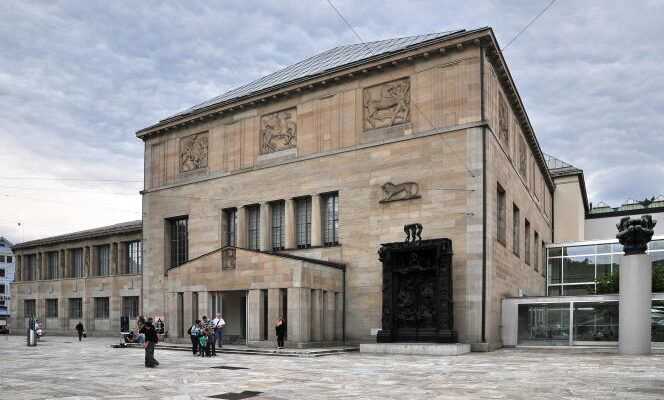ZURICH LETTER
Everything should have gone well. The British star architect David Chipperfield (author, among others, of the renovation of the Neues Museum in Berlin) had completed his work on time, a new sober and modern building, quadrangle with columns in a nod to neoclassicism, noble materials but neutral, travertine and gray Carrara marble, brass sconces.
It is in this luxurious setting that the Zurich authorities were able to proclaim, a few days ago, the opening of their new enlarged Kunsthaus, now “Largest art institution in Switzerland”.
The qualifier is not trivial. For years, Zurich and Basel, the two largest cities in Switzerland, have been fighting a fierce battle with hundreds of millions of Swiss francs in investments for the extension of their infrastructure. To seize, above all, the title of Swiss cultural capital. The Kunstmuseum (Basel) and the Kunsthaus (Zurich) have actually been part of the first division of European art museums for a long time thanks to the wealth of their collections and that of their patrons: bankers and financiers in Zurich, fortunes of the pharmacy and chemistry in Basel have never wavered their support.
Five after its Rhine rival, the city of Zurich has finally been able to open this new prestigious space to display its masterpieces. On the picture rails, paintings by Mark Rothko and Fernand Léger, including Picasso and Cy Twombly: all the great masters of modern art are present, many iconic pieces recognizable at first glance. They are not the problem, but the mythical and sulphurous Bührle collection.
Questionable acquisitions
Exhibited in 2019 at the Musée Maillol in Paris, this collection of French art centered on the Impressionists was acquired by a manufacturer of weapons as legendary as it is contested in the Swiss Confederation. Emil Bührle (1890-1956) did business, and made up part of his immense heritage, with Nazi Germany.
The collection itself was acquired under questionable conditions. In post-war Switzerland, these things were never said. For about thirty years, they have been saying more and more. To the point that, aware of the explosive potential of the new setting offered to this collection, the Kunsthaus management had prepared the ground, promising a “Real didactic support” to highlight the historical context of the Bührle collection and its constitution.
You have 60.13% of this article to read. The rest is for subscribers only.
